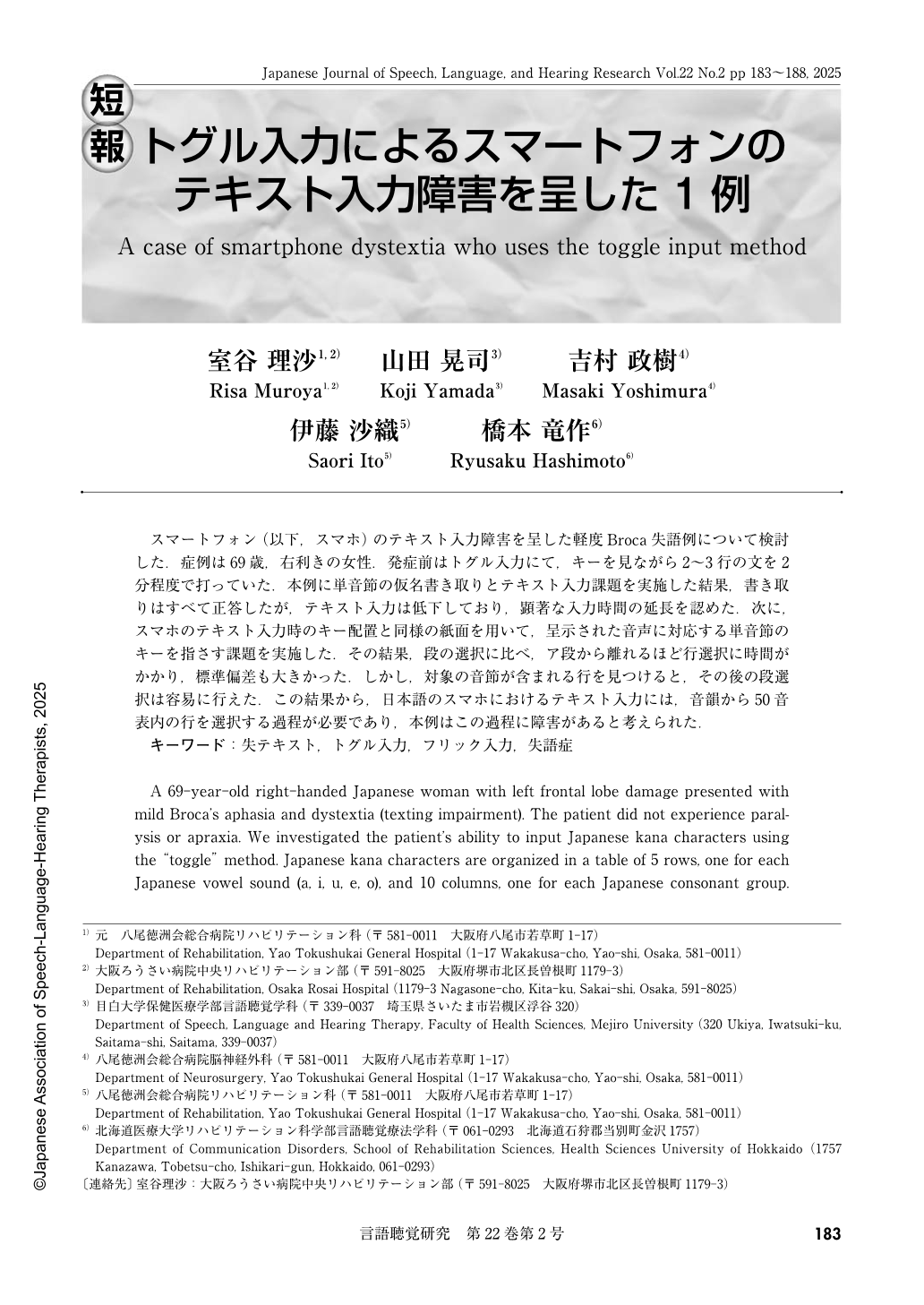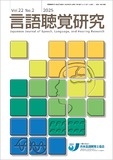Japanese
English
- 有料閲覧
- Abstract 文献概要
- 1ページ目 Look Inside
- 参考文献 Reference
スマートフォン(以下,スマホ)のテキスト入力障害を呈した軽度Broca失語例について検討した.症例は69歳,右利きの女性.発症前はトグル入力にて,キーを見ながら2〜3行の文を2分程度で打っていた.本例に単音節の仮名書き取りとテキスト入力課題を実施した結果,書き取りはすべて正答したが,テキスト入力は低下しており,顕著な入力時間の延長を認めた.次に,スマホのテキスト入力時のキー配置と同様の紙面を用いて,呈示された音声に対応する単音節のキーを指さす課題を実施した.その結果,段の選択に比べ,ア段から離れるほど行選択に時間がかかり,標準偏差も大きかった.しかし,対象の音節が含まれる行を見つけると,その後の段選択は容易に行えた.この結果から,日本語のスマホにおけるテキスト入力には,音韻から50音表内の行を選択する過程が必要であり,本例はこの過程に障害があると考えられた.
A 69-year-old right-handed Japanese woman with left frontal lobe damage presented with mild Broca's aphasia and dystextia (texting impairment). The patient did not experience paralysis or apraxia. We investigated the patient's ability to input Japanese kana characters using the “toggle” method. Japanese kana characters are organized in a table of 5 rows, one for each Japanese vowel sound (a, i, u, e, o), and 10 columns, one for each Japanese consonant group. The first row displays the “a” kana character of each consonant group (a, ka, sa, ta, na, etc.), while subsequent rows display the kana for subsequent vowel sounds in each consonant group. On a smartphone screen tailored to the Japanese region, the kana characters of the first row are displayed. Premorbidly, the patient used the toggle input method for texting messages on her smartphone. In this method, one must first find the key that represents the consonant group containing the target character, and then tap it repeatedly to find the target character. We examined the accuracy and fluency of the patient's kana dictation ability and, separately, her smartphone texting abilities. The patient completed both tasks with high accuracy. However, the texting task required significantly more time than the dictation task. The results show the time required to select the appropriate column to tap increased as the distance from the /a/ column to the target column increased. Once the patient had identified the appropriate column, she was able to rapidly tap, or “toggle” the key and locate the target character. These results suggest that Japanese smartphone texting requires an a priori process of rapidly selecting the column where the target kana character is located.

Copyright © 2025, Japanese Association of Speech-Language-Hearing Therapists. All rights reserved.


